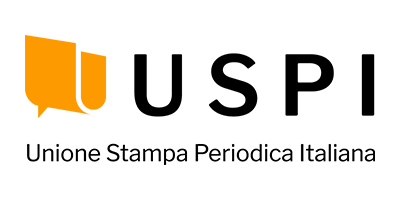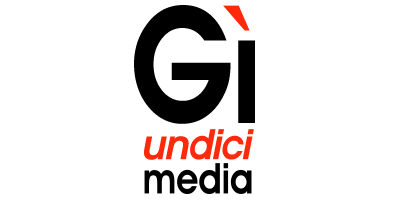Saga Launches Cross-Chain Liquidity Layer, Transforms Blockchain Economics and Eliminates Gas Fees
Saga, the Layer 1 blockchain protocol to launch Layer 1s, today addressed one of DeFi’s largest hurdles with the launch of its Liquidity Integration Layer (LiL), a first-of-its-kind system that auto...
The liquidity integration layer enables seamless asset movement across chains, replacing convoluted bridging and gas fees with a streamlined model that grows transaction volume.
SAN FRANCISCO: Saga, the Layer 1 blockchain protocol to launch Layer 1s, today addressed one of DeFi’s largest hurdles with the launch of its Liquidity Integration Layer (LiL), a first-of-its-kind system that automatically connects and routes liquidity between different blockchain networks and applications. Eliminating fragmentation, LiL creates a unified environment where assets can move freely without relying on traditional bridge infrastructure creating a stronger, more efficient ecosystem. This approach also enables a shift away from per-transaction gas fees to a model based on liquidity flow.
In blockchain's current state, with over $120 billion in assets currently siloed across dozens of separate chains, fragmented liquidity creates significant barriers for both users and developers. Users face higher costs and complexity when moving assets between chains, while developers must manage complex infrastructure across multiple networks, with industry data showing 30% of teams splitting their deployments across different ecosystems. LiL addresses these challenges by providing automatic connectivity and routing between chains, eliminating the need for manual bridge setups that have suffered billions in losses.
The launch builds upon Saga's December 2024 Mainnet 2.0 release and deployment of Uniswap V3, which created the first gasless trading experience on a decentralized exchange. Through LiL, Saga moves away from charging per-transaction fees, instead generating revenue by capturing a percentage of the total value flowing through the network - similar to how payment networks derive revenue from transaction volume rather than charging users directly.
"The blockchain industry's reliance on gas fees and fragmented liquidity has created significant barriers to adoption," said Jin Kwon, Co-founder of Saga. "Users shouldn't need to acquire different tokens just to complete basic transactions, and developers shouldn't have to choose between scalability and access to liquidity. LiL fundamentally changes this by creating a unified environment where applications can scale without sacrificing connectivity."
LiL achieves this through four key technical innovations:
- Automatic bridges that connect all Saga chainlets without manual setup, allowing applications to instantly access the broader network
- A central routing system that optimizes liquidity flow by finding the most efficient paths for moving assets between applications
- Packet-forwarding middleware that automates complex cross-chain transactions, enabling users to move assets between different chains in a single step rather than managing multiple transfers
- Smart contract functionality that enables applications to interact seamlessly across different chains
For developers, this means:
- Launch with immediate access to network-wide liquidity
- Scale applications without traditional gas constraints
- Deploy cross-chain applications without managing multiple bridges
- Generate revenue without charging users transaction fees
"This represents a fundamental shift in how blockchain networks can operate," said Rebecca Liao, Co-Founder and CEO at Saga. "By deriving value from liquidity flow rather than infrastructure costs, we create an environment where early-stage projects can experiment freely, successful applications can scale efficiently, and users never have to think about gas fees."
Twenty pioneering projects are already participating in the LiL Beta Program across DeFi, gaming, and AI applications. These include Metropolis, which develops protocols for automated AI agent trading across different chains, and various DeFi applications building core financial services. The Uniswap deployment demonstrates how LiL enables new possibilities in DeFi, allowing users to trade tokens without managing gas fees across different chains.
Supporting the LiL launch are infrastructure partners Evmos, providing the Ethereum Virtual Machine runtime for Saga's chainlets, and Squid Router, extending token swapping and routing services to Saga's ecosystem.
Looking ahead, Saga plans to introduce additional DeFi primitives and foundational financial tools, including perpetual contracts, lending protocols, and yield optimization services. These developments will showcase how LiL's infrastructure enables entirely new categories of DeFi applications previously constrained by traditional blockchain economics.
For more information about Saga and its Liquidity Integration Layer, please visit www.saga.xyz.
About Saga
Saga is a Layer 1 blockchain designed for developers and businesses seeking to launch their own application-specific blockchains (chainlets). With a focus on scalability, simplicity, and user empowerment, Saga is building the foundation for the next generation of decentralized applications across gaming, AI, Defi, and beyond.
Fonte: Business Wire
Related news
Last News
RSA at Cybertech Europe 2024
Alaa Abdul Nabi, Vice President, Sales International at RSA presents the innovations the vendor brings to Cybertech as part of a passwordless vision for…
Italian Security Awards 2024: G11 Media honours the best of Italian cybersecurity
G11 Media's SecurityOpenLab magazine rewards excellence in cybersecurity: the best vendors based on user votes
How Austria is making its AI ecosystem grow
Always keeping an European perspective, Austria has developed a thriving AI ecosystem that now can attract talents and companies from other countries
Sparkle and Telsy test Quantum Key Distribution in practice
Successfully completing a Proof of Concept implementation in Athens, the two Italian companies prove that QKD can be easily implemented also in pre-existing…
Most read
Alibaba Group Announces March Quarter 2025 and Fiscal Year 2025 Results
$BABA #alibaba--Alibaba Group Holding Limited (NYSE: BABA and HKEX: 9988 (HKD Counter) and 89988 (RMB Counter), “Alibaba”, “Alibaba Group” or the “company”)…
U.S. Data Center Construction Market Outlook Report 2025-2030 Featuring…
The "U.S. Data Center Construction Market - Industry Outlook & Forecast 2025-2030" report has been added to ResearchAndMarkets.com's offering. The…
J.D. Power Names Joshua Peirez New CEO
J.D. Power today announced that Joshua Peirez will assume the role of President and CEO of J.D. Power, guiding the company in its next phase of growth…
IMVARIA Reports Multi-Site Clinical Experience With FDA-Authorized AI…
#ATS--IMVARIA Inc., a health tech company pioneering AI-driven digital biomarker solutions, today reported results from multi-site clinical experiences…






